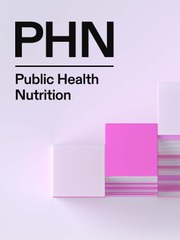No CrossRef data available.
Voluntary Vitamin D Testing: A Decade-Long Study of Utilization Patterns and Impact on Deficiency Outcomes in Taiwan
Published online by Cambridge University Press: 25 September 2025
Abstract
Although guidelines recommend targeted vitamin D testing for high-risk populations, testing has increased globally. Limited studies have examined real-world testing patterns and their relationship with deficiency outcomes. This study investigates trends, demographic determinants, and deficiency outcomes associated with voluntary vitamin D testing among Taiwanese adults.
A retrospective cohort study analyzing electronic medical records to assess vitamin D testing trends, demographic predictors of deficiency, and status changes following consecutive tests within two years. Vitamin D status was classified based on serum 25-hydroxyvitamin D levels as deficient (<20 ng/mL), insufficient (20–29.9 ng/mL), or sufficient (≥30 ng/mL).
A tertiary medical center in Taiwan.
Between 2013 and 2022, 13,381 outpatients underwent voluntary vitamin D testing. After excluding those aged <18 years, with advanced renal disease, osteomalacia, rickets, or hyperparathyroidism, 8,383 were included in the final analysis.
Testing increased sharply after 2019. Although women underwent twice as many tests, men had a higher deficiency prevalence (56.94% vs. 53.01%). Adults aged 18–34 had the highest prevalence (67.81%). Obstetrics and Gynecology specialists ordered the most tests, particularly for female infertility, with 65.73% of patients deficient. Among those with repeat tests, deficiency prevalence decreased from 60% to 43.25%.
The increase in voluntary vitamin D testing with demographic disparities highlights the importance of understanding testing behaviors and public health implications. Improved vitamin D status at follow-up suggests potential benefits in identifying high-risk individuals and emphasizes the need for further research to evaluate outcomes and guide prevention strategies.
Keywords
Information
- Type
- Research Paper
- Information
- Creative Commons
- This is an Open Access article, distributed under the terms of the Creative Commons Attribution licence (http://creativecommons.org/licenses/by/4.0/), which permits unrestricted re-use, distribution and reproduction, provided the original article is properly cited.
- Copyright
- © The Author(s), 2025. Published by Cambridge University Press on behalf of The Nutrition Society
Footnotes
Jui-To Wang, and Yu-Chun Chen equally contributed and corresponded to this study.

